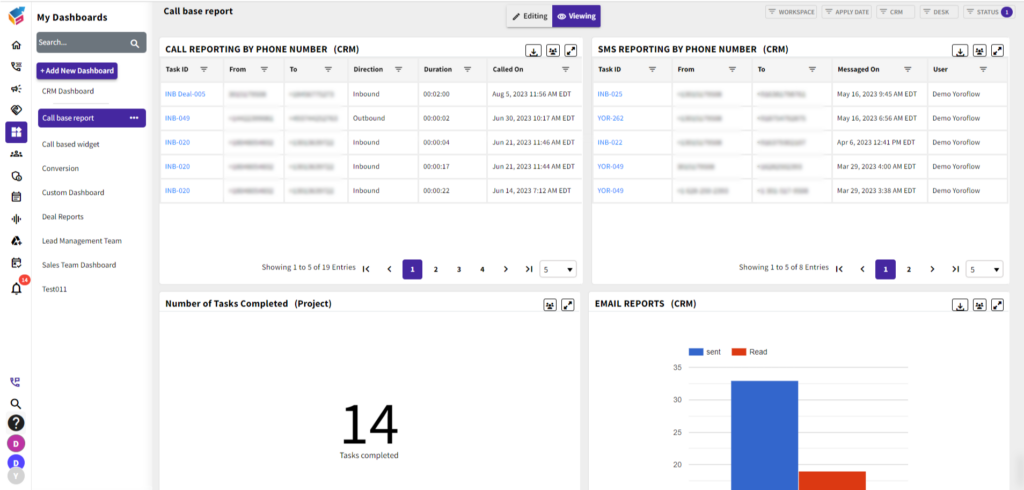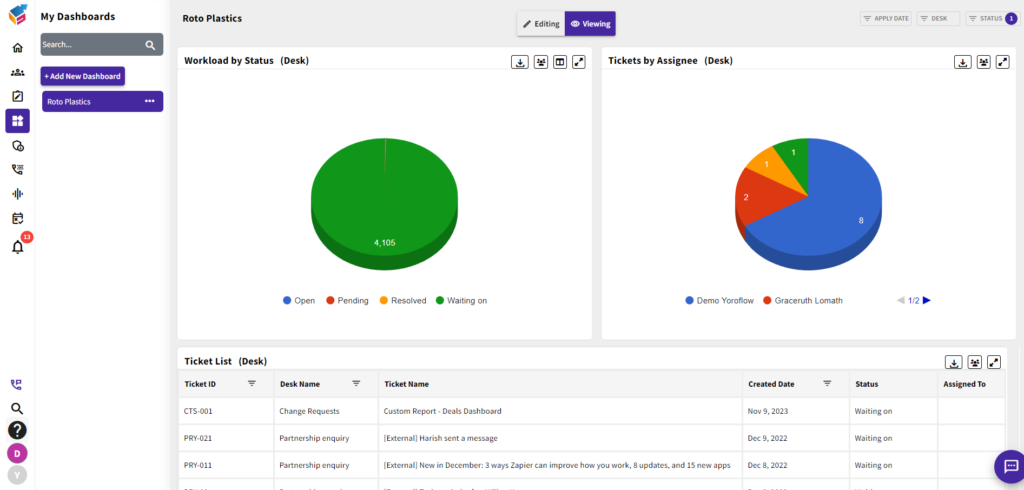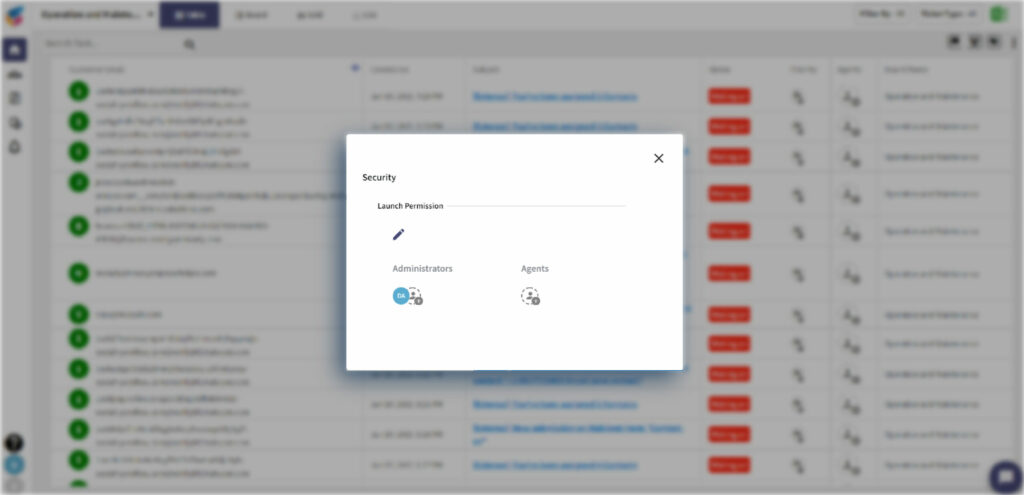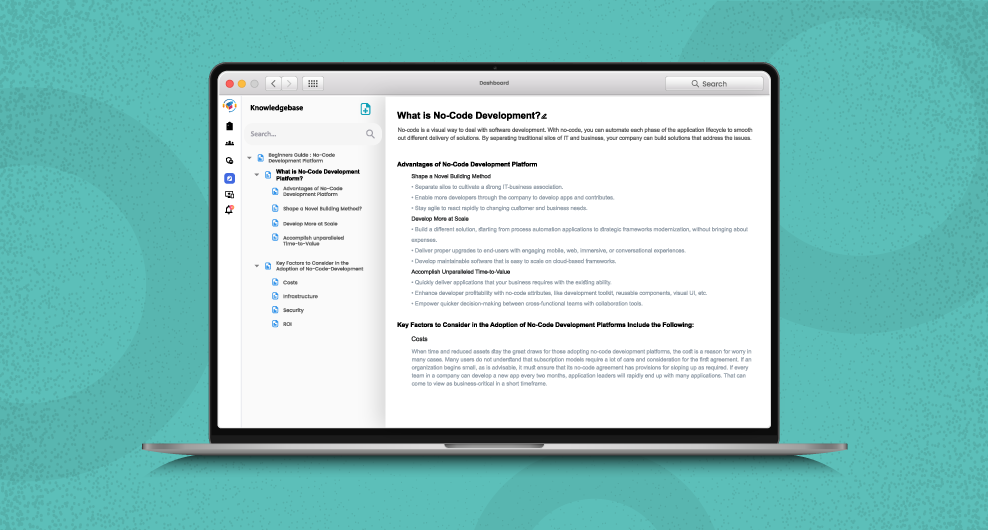Table of Contents
What is a Knowledge Management System?
Do you know what is KMS? A Knowledge Management System (KMS) is a software or platform that helps organizations capture, store, organize, retrieve, and share knowledge and information within the organization. The primary goal of a KMS is to promote knowledge–sharing and collaboration among employees, leading to increased productivity, innovation, and efficiency. Knowledge base systems are integral components of a KMS, providing a structured repository for information, further enhancing the organization’s ability to manage and leverage its collective knowledge effectively.
A KMS typically includes various features such as a centralized database for storing information, search functionality for finding relevant data, tools for creating and editing documents, collaboration tools for sharing knowledge, and analytics to track usage and identify gaps in knowledge.
KMS can be categorized into three types: enterprise-wide systems, community-based systems, and specialized systems.
Enterprise-wide systems are designed to support knowledge management across an entire organization.
Community-based systems are focused on facilitating knowledge sharing and collaboration within specific groups, such as teams or departments.
Specialized systems are designed to support specific business processes or industries, such as healthcare or legal services.
Overall, a KMS is a valuable tool for organizations to manage and leverage their collective knowledge, leading to better decision-making, improved performance, and increased innovation.
What are the 3 Major Knowledge Management Systems?
There are various types of knowledge management systems (KMS), and the classification may vary based on different criteria. However, three major categories of knowledge management systems are:
Document Management Systems (DMS): These systems focus on the storage, retrieval, and management of digital documents. Document Management Systems help organizations organize and control access to their electronic files, fostering efficient document sharing and collaboration.
Knowledge Repositories or Knowledge Bases: These systems provide a centralized repository for storing and organizing explicit knowledge, such as documents, manuals, FAQs, and other informational resources. Users can access and contribute to this repository to share and retrieve knowledge.
Collaboration and Social Platforms: These platforms emphasize the social aspect of knowledge sharing. They include features like forums, wikis, blogs, and social networking tools that facilitate communication and collaboration among employees. The goal is to encourage informal knowledge sharing and collective problem-solving.
It’s important to note that these categories can overlap, and many modern knowledge management systems integrate features from multiple types to provide a comprehensive solution for organizations.
Why Does Your Organization Need a KMS?
There are several reasons why an organization would need a Knowledge Management System (KMS):
- Knowledge Retention: An organization can lose critical knowledge when employees retire or leave the organization. A KMS helps to capture, store, and organize that knowledge in a central repository, making it available to future employees.

- Increased Efficiency: With a KMS, employees can access information quickly and easily, saving time and effort. This leads to increased productivity and efficiency.
- Improved Collaboration: A KMS enables employees to share knowledge and work collaboratively, breaking down silos and promoting teamwork.
- Better Decision-Making: A KMS provides access to accurate and up-to-date information, allowing for informed decision-making.
- Enhanced Innovation: By providing a platform for sharing knowledge and ideas, a KMS can encourage innovation and creativity.
- Competitive Advantage: With a KMS, an organization can leverage its collective knowledge and expertise, gaining a competitive advantage in the marketplace.
How to Choose the Right Knowledge Management System?
In today’s fast-paced world, businesses need to be able to manage their knowledge efficiently and effectively. A knowledge management system is a software solution that helps businesses manage and share their knowledge, from documents and data to best practices and expertise. However, with so many options available, it can be overwhelming to choose the right knowledge management system for your organization.

In this blog, we’ll provide expert tips for selecting the best knowledge management system for your business.
Define Your Objectives
Before selecting a knowledge management system, it’s essential to define your objectives. What are your business goals, and how can a knowledge management system help you achieve them? Identify what knowledge your organization needs to manage and share, and how it will be used. This will help you evaluate potential knowledge management systems based on your specific requirements.
Determine Your Budget
The next step is to determine your budget. The cost of a knowledge management system can vary widely depending on the features and functionality you need. Consider the long-term benefits of investing in a robust system, such as increased efficiency and productivity, better decision-making, and improved collaboration. Determine what you can afford and what kind of return on investment you expect.
Evaluate Features and Functionality
Once you’ve defined your objectives and budget, evaluate the features and functionality of potential knowledge management systems. Look for systems that offer features such as workflow automation, employee engagement, project management, app integration, CRM platform, collaboration tools, and analytics. Consider whether the system can integrate with your existing tools and software, and whether it can scale to meet your future needs.
Consider User Experience
A knowledge management system is only effective if it’s easy to use. Consider the user experience and interface of potential systems. Look for systems that are intuitive and user-friendly, with a simple navigation structure and clear labeling. Consider whether the system offers customization options to match your branding and user preferences.
Ensure Security and Compliance
Security and compliance are critical considerations for any knowledge management system. Look for a knowledgebase system that offers robust security features, such as encryption, access controls, and audit trails. Ensure the system complies with relevant regulations, such as GDPR or HIPAA. Consider whether the system offers disaster recovery and backup options to protect your data.

Check Vendor Support
Finally, consider the vendor’s support and customer service. Look for vendors that offer robust customer support, including online resources, training, and technical support. Consider whether the vendor has a strong reputation in the industry and whether they offer ongoing updates and maintenance for their product.
How to Adopt Knowledge Management System for Your Organization?
If you are considering adopting a KMS for your organization, there are a few things to keep in mind:
- Identify your organization’s needs: Before selecting a KMS, identify your organization’s needs and objectives. What problems are you trying to solve? What information do you need to manage? What are the goals of the KMS implementation?
- Evaluate different KMS options: Once you have identified your organization’s needs, evaluate different KMS options to find one that meets your requirements. Consider factors such as ease of use, scalability, customization options, and cost.
- Plan for implementation: Implementing a KMS requires planning, including determining who will be responsible for maintaining the system, how the system will be integrated with existing processes, and how employees will be trained to use the system. Additionally, consider integrated management systems for a comprehensive approach to organizational efficiency.
- Ensure adoption and ongoing usage: To ensure the success of the KMS, it’s essential to encourage adoption and ongoing usage. This can include providing training and support to employees, establishing clear guidelines for information management, and promoting the benefits of the system.
- Continuously monitor and improve: Finally, it’s important to continuously monitor and improve the KMS to ensure it remains relevant and useful to your organization. This can involve tracking usage data, soliciting feedback from employees, and adjusting as needed.
In conclusion, selecting the right knowledge management system is critical for any business looking to manage and share their knowledge effectively.




